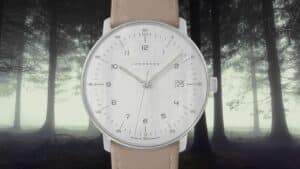Junghans: The German Timekeeper That Refused to Die
If you’d walked through Schramberg, Germany, in 1903, you’d have heard it before you saw it. The factory on the hillside didn’t hum, it thundered — three thousand workers, millions of clocks, a whole town running on the rhythm of one company. Junghans wasn’t just making timepieces; it was flooding the world with them. At its peak, this little Black Forest outfit was the largest clockmaker on the planet. Switzerland had prestige, but Junghans had muscle.
 Then came the wars, and the muscle got conscripted. The same gears that once kept kitchens punctual were suddenly wired into bombs and artillery fuses. After 1945, the Junghans star logo didn’t shine so brightly. Germany’s industries were tainted, stripped down, rebuilt. Junghans could have died there — another brand buried under rubble and guilt. But it didn’t. Instead, it did something outrageous for a company that once measured success in millions of units: it handed its future to an artist.
Then came the wars, and the muscle got conscripted. The same gears that once kept kitchens punctual were suddenly wired into bombs and artillery fuses. After 1945, the Junghans star logo didn’t shine so brightly. Germany’s industries were tainted, stripped down, rebuilt. Junghans could have died there — another brand buried under rubble and guilt. But it didn’t. Instead, it did something outrageous for a company that once measured success in millions of units: it handed its future to an artist.
Max Bill wasn’t your typical watch guy. He was a Bauhaus architect who thought in geometry and light. When Junghans called him in 1956, he designed dials so clean they looked like someone had erased everything unnecessary until only truth remained. His watches weren’t accessories; they were philosophy on your wrist. Decades later, they’re still in production, still modern, still whispering that clarity is the highest form of beauty.
But time has teeth. By the 1970s, the quartz crisis was chewing up European watchmakers. Junghans, once king of the hill, was circling the drain. Ownership changed, factories went quiet, the obituaries practically wrote themselves. And then — a plot twist.
In 1990, Junghans unveiled the MEGA 1, the world’s first radio-controlled wristwatch. Forget Swiss romance — this thing looked like it fell off the set of Tron. Plastic. Angular. Weird. And it was deadly precise, synced to atomic time, a watch that literally couldn’t be wrong. Overnight, Junghans wasn’t a relic. It was the future. Solar tech followed. The company went from nearly extinct to innovating like it had nothing left to lose.
Today, Junghans lives in that tension: half design museum, half science lab. One line still carries Max Bill’s Bauhaus purity, while another carries the ghost of the MEGA 1, ticking with atomic accuracy. And through it all, the Schramberg factory still clings to its hillside, a monument to ambition, collapse, and reinvention.
Junghans isn’t Rolex. It isn’t Omega. It doesn’t scream status from across the table. But if you want a watch with a story — one that’s been to the top, nearly died, and came back by bending time itself — Junghans might just be the quietest, boldest survivor in all of watchmaking.

